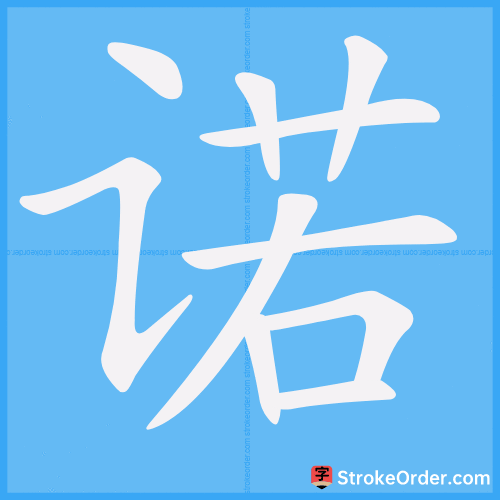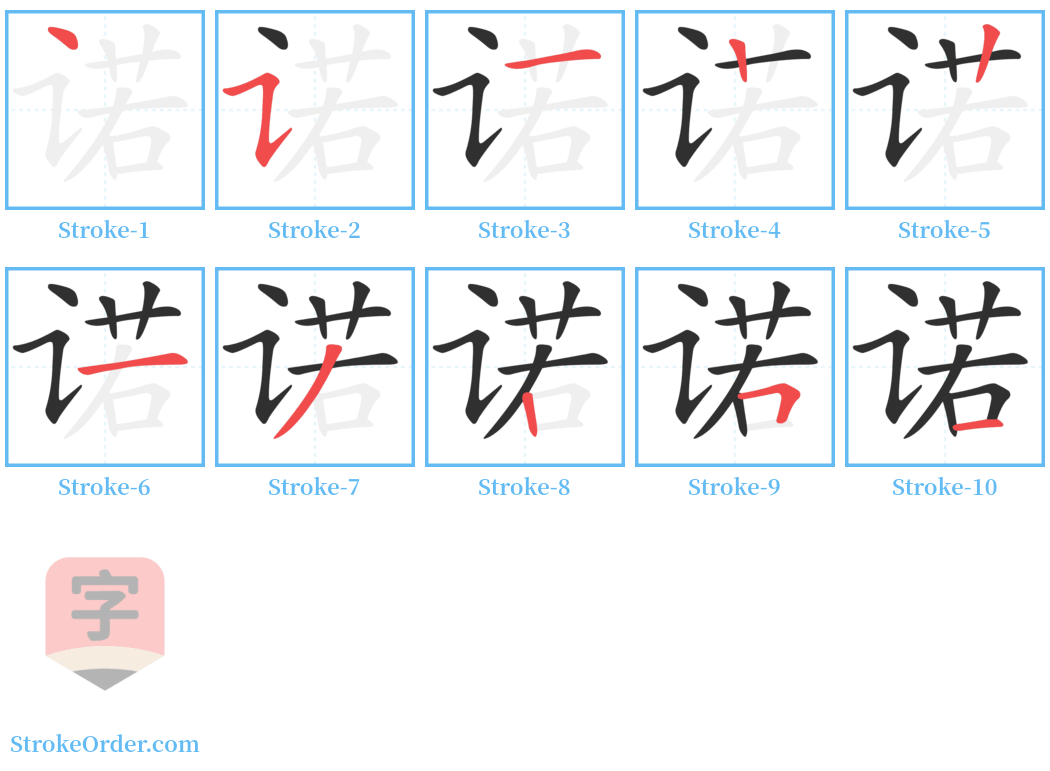诺 Stroke Order
Animated Stroke Order of 诺

Stroke Order Diagrams for 诺

Step-by-Step Handwriting Guide for 诺

Learn to Write Chinese Characters with Video Tutorials
Watch the video of writing the Chinese character "诺", learn the correct stroke order (笔顺) of the character "诺", and master the standard way of writing the character "诺".
Free Printable Handwriting Practice with Stroke Order: 诺
Printable Writing Practice Worksheet of "诺" in Portrait Orientation (Tian Zi Ge)

Printable Writing Practice Worksheet of "诺" in Landscape Orientation (Tian Zi Ge)

Information of 诺
Pinyin
nuò
Radical
讠
Strokes
10 strokes
Usage
★★★★★
Definition
to promise / to yes
诺
Nuò
1. The sound of agreement, indicating consent: 唯唯~~ (Yes, yes...).
2. To agree; to allow: ~言 (promise). 许~ (to promise). 承~ (to accept). 一~千金 (A promise is worth a thousand gold coins).
诺
Nuò
1. Same as the original meaning (generally used in the context of higher authority responding to lower authority, or among equals; when responding to superiors, "谨诺" is used, meaning "yes").
2. In ancient times, marking a document at the end to indicate permission is called "诺," similar to signing today.
引
1. 《说文》: 诺,应也。 According to "Shuowen," it means to respond. A slow response is called "诺," while a quick response is "唯."
2. 《诗·鲁颂·閟宫》: 莫敢不诺. ("No one dared not to respond.")
3. 《战国策·赵策四》: 太后曰: “诺。恣君之所使之.” ("The queen dowager said: 'Okay, do as you please.'")
4. 《战国策·齐策》: 孟尝君不说,曰: “诺,先生休矣." ("Mengchang Jun did not speak, saying: 'Okay, you may rest, sir.'")
例
Also: 诺诺 (to respond repeatedly); 诺唯 (to respond); 诺许 (to promise; to agree).
引
1. 清·黄遵宪《述闻》: 是谁画诺谁传诏,一纸明贻万国羞! ("Whoever marked the agreement issued the edict, a paper shame bestows upon the ten thousand nations!")
Neumann (surname) / John von Neumann (1903-1957), Hungarian-born American mathematician and polymath
Input Method for 诺
Pinyin
nuo4
Wubi
yadk
Cangjie
ivtkr
Zhengma
segj
Four Corner
34764
Unicode
U+8bfa